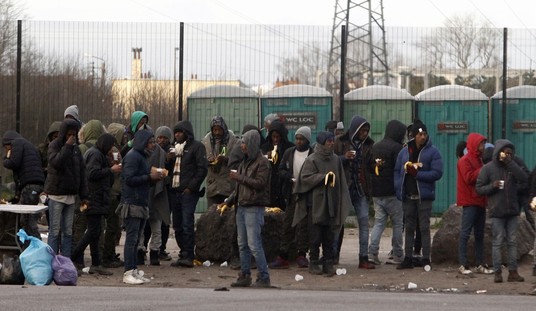The American economy hit another bump in the road, or headwinds, or whatever euphemism is in use this week for negative news. The ISM index for the manufacturing sector unexpectedly slid into contraction territory — although it didn’t have far to fall to get there:
U.S. manufacturing activity contracted in May for the first time in six months as new orders slipped and there was less demand for exports, a new industry report showed. A separate report showed that U.S. construction spending rose slightly, but fell short of estimates.
The Institute for Supply Management (ISM) said its index of national factory activity in May fell to 49.0 from 50.7 in April, short of expectations for 50.7.
A reading below 50 indicates contraction in the manufacturing sector. The last time the ISM manufacturing index fell below 50 was November 2012, shortly after the U.S. East Coast was hit by a massive storm.
The gauge for new orders dropped to 48.8 from 52.3, while a measure of employment edged down to 50.1 from 50.2. Production fell to 48.6 from 53.5.
As the numbers show, this isn’t much of a slide. The problem is that manufacturing hasn’t been performing strongly in the first place. As with the overall economy, it’s been stagnating rather than expanding, and the gap between expectations and contraction was already quite small.
Nor is this something to blame on the sequester. The big issue, as the report indicates, was a drop in export demand. That will slow down the American economy from its hardly-breakneck expansion pace of 2.4% in Q1, but probably won’t push it into contraction on its own. Consumer spending is still in positive-growth territory, and even the federal government will be spending money — just at a slightly slower growth rate than before the sequester.
McClatchy reports on the Nightmare on Sequester Street bust:
Taken as a whole, the impact of the mandated across-the-board cuts “so far has been really teeny,” said Barry Anderson, the deputy director of the National Governors Association. The U.S. economy is showing signs of improvement, with housing prices up, gasoline prices down and April’s 7.5 percent unemployment rate the lowest in four years.
But as the sequester continues, more Americans are learning that even the teeniest change in Washington spending can have a big impact on their lives. From furloughed workers to shuttered federal offices to canceled White House tours and lighter entitlement checks, the reality of the sequester is hitting home.
“Clearly, sequester was overhyped, in the sense that the impression was given that all the bad things would happen immediately, and that was not the case,” said Robert Bixby, the executive director of the Concord Coalition, a nonpartisan budget-watchdog group. “There have been some real-world furloughs, and that does have a negative impact. The question is whether those have had consequences.”
The consequences outlined in the McClatchy report have nothing to do with manufacturing, however. It has to do with the furloughs and reductions in unemployment insurance, and the indirect economic impact of having less disposable income in the market. Even the cuts affecting the Pentagon are entirely focused on personnel costs rather than materiel and supply purchases, which would directly drive manufacturing numbers.
The scale of the drop into contraction territory might overstate the reversal in manufacturing, which is more of a small slide than a steep drop. But it does highlight the stagnation of the Obama recovery and the lack of any clear signal that things will improve over the next few months.








Join the conversation as a VIP Member